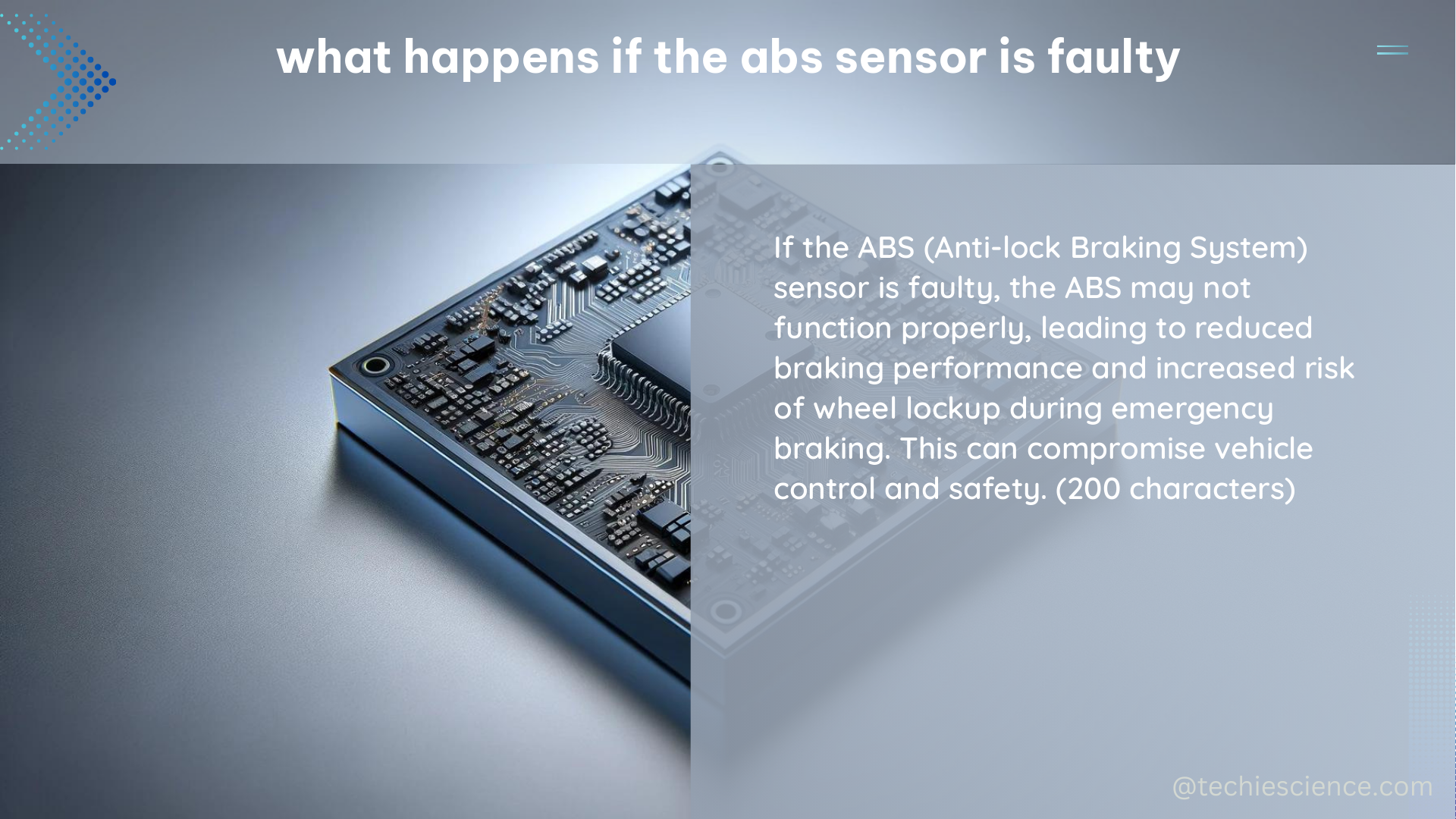A faulty ABS (Anti-lock Braking System) sensor can lead to a range of issues in a vehicle’s braking system, compromising the overall safety and performance. Understanding the technical specifications and potential consequences of a malfunctioning ABS sensor is crucial for maintaining a safe and reliable driving experience.
ABS Warning Light Illumination
One of the primary indicators of a faulty ABS sensor is the illumination of the ABS warning light on the vehicle’s dashboard. This warning light serves as a crucial alert, informing the driver that there is a problem with the ABS system. When the ABS sensor is malfunctioning, the warning light will turn on, indicating that the ABS system may not function correctly.
Loss of ABS Functionality

The ABS system relies on wheel speed sensors, including the ABS sensor, to detect wheel slip and apply the necessary braking force to prevent the wheels from locking up. A faulty ABS sensor can lead to a complete loss of ABS functionality, increasing the risk of skidding and loss of vehicle control, especially in slippery or wet driving conditions.
Increased Stopping Distance
Without the ABS system’s ability to prevent wheel lock-up, the vehicle’s stopping distance can increase significantly, particularly on slippery surfaces. This increased stopping distance can lead to a higher risk of accidents and collisions, endangering the driver, passengers, and other road users.
Reduced Braking Performance
A faulty ABS sensor can also affect the overall braking performance of the vehicle, making it more challenging to stop the vehicle quickly and safely. This can be especially problematic in emergency situations or when navigating through hazardous road conditions.
Potential Damage to Other Brake System Components
When the ABS system malfunctions due to a faulty ABS sensor, it can put additional stress on other brake system components, such as the brake pads and rotors. This can lead to premature wear and tear, increasing the frequency and cost of brake system maintenance and repairs.
Technical Specifications of a Faulty ABS Sensor
A faulty ABS sensor can exhibit various technical specifications that can impact the performance of the ABS system. These include:
- Resistance: The resistance of a faulty ABS sensor can be outside the recommended range of 500 to 1,500 ohms, affecting the signal strength and quality.
- Signal Strength: A weak or intermittent signal from the ABS sensor can impair the ABS system’s ability to detect wheel slip and apply the necessary braking force.
- Frequency Response: If the frequency response of the ABS sensor is outside the recommended range, it can affect the system’s ability to detect high-frequency vibrations and apply the appropriate braking force.
- Temperature Range: A faulty ABS sensor may have a temperature range that is outside the recommended specifications, which can impact the sensor’s performance and accuracy in extreme temperature conditions.
DIY: Testing an ABS Sensor
Testing an ABS sensor can be a complex process, and it is generally recommended to seek the assistance of a professional mechanic or automotive technician. However, if you have the necessary tools and expertise, you can follow these steps to test an ABS sensor:
- Locate the ABS Sensor: Identify the location of the ABS sensor, which is typically near the wheel hub and connected to the vehicle’s wiring harness.
- Check the Resistance: Use a multimeter to measure the resistance of the ABS sensor, ensuring it falls within the recommended range of 500 to 1,500 ohms.
- Check the Signal: Utilize an oscilloscope to examine the signal output of the ABS sensor, verifying that it is strong, consistent, and corresponds to the wheel speed.
- Check the Wiring: Inspect the wiring and connectors for any signs of damage, corrosion, or loose connections that could affect the sensor’s performance.
- Test the ABS System: After testing the ABS sensor, evaluate the overall functionality of the ABS system by applying the brakes and observing the ABS warning light and wheel speed sensors.
By understanding the technical specifications and potential consequences of a faulty ABS sensor, you can better diagnose and address any issues with your vehicle’s braking system, ensuring a safe and reliable driving experience.
References:
– Criteria for Sewage Works Design (2008). Retrieved from https://apps.ecology.wa.gov/publications/documents/9837.pdf
– Check and change ABS and wheel speed sensors – HELLA (n.d.). Retrieved from https://www.hella.com/techworld/us/Technical/Sensors-and-actuators/Check-change-ABS-sensor-4074/
– Magnetic braking system (n.d.). Retrieved from https://worldwidescience.org/topicpages/m/magnetic%2Bbraking%2Bsystem.html

The lambdageeks.com Core SME Team is a group of experienced subject matter experts from diverse scientific and technical fields including Physics, Chemistry, Technology,Electronics & Electrical Engineering, Automotive, Mechanical Engineering. Our team collaborates to create high-quality, well-researched articles on a wide range of science and technology topics for the lambdageeks.com website.
All Our Senior SME are having more than 7 Years of experience in the respective fields . They are either Working Industry Professionals or assocaited With different Universities. Refer Our Authors Page to get to know About our Core SMEs.